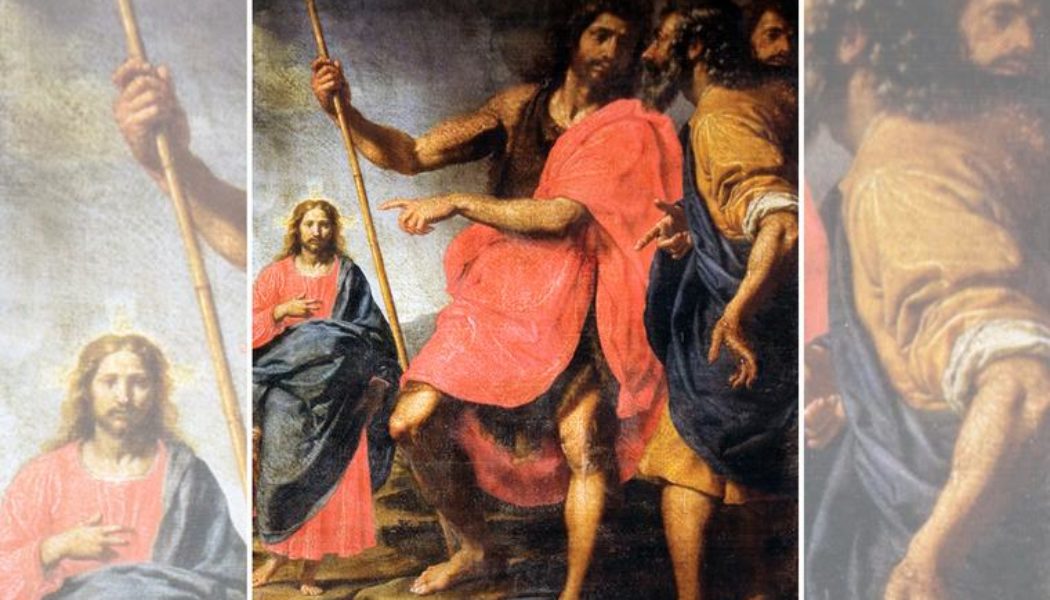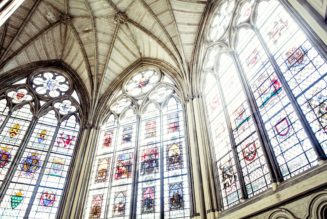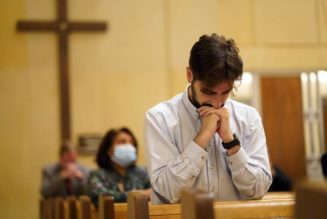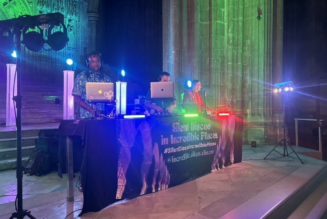
(See Mark 3:14-15, Matthew 4:12-17 and 13:1-52, Luke 4:14-29 and John 1:35-51.)
The Third Luminous Mystery is quite expansive: “the call to conversion and the proclamation of the Kingdom.” All of Jesus’ preaching for three years was a “proclamation of the Kingdom” (which is why I include some of the “parables of the Kingdom” — Matthew 13 — in the meditation readings). But we can also address the essence of Jesus’ teaching.
Why did the Son of God become man? We answer that question every Sunday in the Profession of Faith: “For us men and for our salvation, he came down from heaven.”
“For our salvation.” The Son of God became man because man had lost his relationship to God, man in justice had to restore it, but man in truth was incapable of doing so. God could have left man in his sorry state. But “God so loved the world that he gave his only begotten Son” to save us (John 3:16).
And when Jesus began three years of public ministry, the first command out of his mouth was “Repent!” “Repent and believe the Good News!” (Mark 1:15).
The call to repentance is the Gospel’s “Good News.” The call to repentance is how God “welcomes” human beings. “There is something profoundly wrong with you that you cannot fix. I will do everything I can to heal you, but there is one thing I cannot do. Only you can want to change things. Only you can want to give up sin. Only you can repent.”
Christ’s message is that the Gospel measures you. You do not measure the Gospel.
Is this “negative?” Is it an “unwelcoming” message? Only for those superficially attuned to their feelings. But everyman, as long as he stops long enough to examine himself, recognizes there is something wrong, something he needs, something he cannot fix.
God, too, recognizes that there is something wrong with man, something he needs, something he cannot fix. And God wants to make it right, fill man’s needs like he filled the water jugs of Cana with the finest wine, fix what’s broken.
But even God cannot take away the sins I want to keep. Why? Because even God cannot make me love him nor turn what is not love into “love.” For those things, you want a magician to pull the wool over your eyes, not the God who IS Love (1 John 4:8).
That is the heart of the Third Luminous mystery: the call to conversion. It is a call that we are invited to respond to. It is a call on which we can renege. And it is a call that is a lifelong vocation.
Baptism is the fundamental sacrament of conversion. Conversion involves two things: turning to God and from whatever idol we have put in God’s place. Those idols are most often our favorite sins. But, like a two-sided coin, we cannot do one without the other: we cannot turn to God without turning from sin. Baptism is that fundamental conversion, which marks us permanently as belonging to Christ. Even if we subsequently reject him (because baptism does not take away free will), we have been sealed with Christ. And we will bear his seal forever: in heavenly glory or hellish disgrace.
Baptism is the basic turn from sin and to grace. But conversion is an ongoing process, because God invites us to “be perfect as your heavenly Father is perfect” (Matthew 5:48). And since we are never going to be as perfect as God, there is always room for us to grow in holiness.
“But,” you say, “I can never be like God, so why bother?” Well, if you told somebody whom you loved, “I love you enough?” do you think that person’s reaction would be, “Great, he’s reached the pinnacle of love!” No, that person would recognize that if one does not make progress in love, one will backslide from love. There is no static moment, no “good enough” in love. Neither is there in conversion.
And, sometimes, we can really backslide, really fall out of love and out of grace. God, in his love, does not abandon us. That is why he gave us the sacrament of Penance. The Church has called it “the plank after the shipwreck of sin.” It is a matter of Catholic teaching that, for a person who commits mortal sin after baptism, the sacrament of Penance is as necessary to him as once baptism was.
So, conversion is never a “once-and-done” task. The call to conversion is constant in the Christian life, because entry into the Kingdom requires love, and love is both dynamic and infinite.
Once we understand that, we can meditate on the ways God invites us into his Kingdom. We can reflect on his loving patience and fatherly correction. We can marvel at what God’s “Kingship” is like, how it differs from how worldly “rulers … lord [their power] over others,” and why “it cannot be that way with you” (Matthew 20:25-26).
But all of our reflections on God’s Kingdom, on his Love and Mercy, and on heaven must always return to an awareness of what we have been saved from. They must constantly return to and reinforce our commitment to conversion. And they must do so with sobriety because, as Paul warns, we “need to work out our salvation with fear and trembling” (Philippians 2:12-13). We need that not because God is unfaithful but because we are fickle and because “your opponent, the devil, like a roaring lion, is prowling around, seeking someone to devour” (1 Peter 5:8-10).
How to depict today’s mystery in sacred art? There are, of course, many paintings about Jesus’ specific teachings about the Kingdom, but the call to conversion is more abstract. I’ve chosen Ottavio Vanini’s 17th-century painting, “St. John the Baptist Points Out Christ to St. Andrew.”
I chose that painting for several reasons:
- John’s message was a precursor to Jesus’: like Jesus, John preached a call to repentance. Those who accepted John’s baptism did so as a sign of their willingness to repent.
- This episode occurs at the beginning of Jesus’ public life. John has just baptized Jesus and recognizes him — thanks to the illumination of the Holy Spirit — as the Christ. John immediately confesses Jesus: “Look, the Lamb of God who takes away the sins of the world” (John 1:29). John’s confession is about who Jesus is and what his Mission is. Jesus’ core mission is to “take away the sins of the world.” (Note that, in the painting, when John points out Jesus, Vanini depicts Christ’s halo in the form of a cross: following Christ involves following the way of the cross.)
- Who is this “Lamb of God?” Why does John use that title as opposed to, say, “the Christ” or “the Messiah?” It is a deliberate allusion to the Passover Paschal Lamb. That Lamb was sacrificed. His blood, smeared on the doorposts of the Hebrews in Egypt, saved them from the plague of the death of the firstborn and set into motion their liberation from that land (Exodus 12:12-13). Christianity has always seen the Paschal Lamb as prefiguring the true “Lamb of God” slaughtered on Calvary, “whose blood anoints the doorposts of believers” (Paschal Vigil Exsultet).
- John repeats that same identification to Andrew: “Look, the Lamb of God!” (1:35) He puts himself aside to point out to Andrew, then his disciple, the one who has come who is greater than him. And the result is that John’s disciples “heard this … [and] followed Jesus” (v. 37).
That is Jesus’ identity and his welcome message. In John (1:35-51), we immediately see five disciples going after Jesus and him inviting them to “come and see.”
Being aware of one’s sinfulness might depress some people. But the Christian message is not one of sinfulness but healing from sinfulness by facing the truth about our sinfulness. That is the call to conversion and the prerequisite to entering the Kingdom of Heaven. That is the essence of this mystery.
(For more on this painting, see here.)









